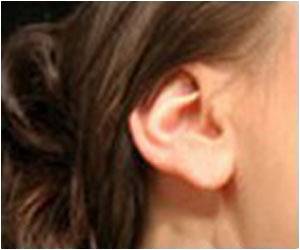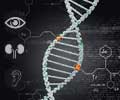Preservation of hearing, and preventing deafness, in humans with USH3 syndrome could become a reality within the next ten years.

‘People with Usher syndrome type 3 are born with normal hearing and most commonly develop hearing loss in their teenage years, requiring hearing aids by mid- to late-adulthood. By middle age, they are often completely deaf.’





The onset of sensory deficits in USH3, which also can result in loss of vision, is generally noticeable in childhood and is primarily found in people of Finnish background and Ashkenazi Jewish descent. In a new study published in Scientific Reports, Alagramam, who is an associate professor of otolaryngology, genetics and genomic sciences, and neurosciences at CWRU School of Medicine, and Lawrence Lustig, MD, chair of the Department of Otolaryngology--Head & Neck Surgery at Columbia University Medical Center, found that loss of hearing can be curtailed in a mouse model for hearing loss in USH3 through gene therapy. In gene therapy, normal genes are transplanted into cells in place of malfunctioning or missing ones to repair genetic disorders.
The clarin-1 gene provides information for making CLRN1, a protein found in hair cells, which help convey sound signals to the brain. "I think of hair cells as neatly arranged mini-microphones in the inner ear that are sensitive to different frequencies of sound entering the ear," said Alagramam. Previous work from the Alagramam lab showed that clarin-1 is essential for maintaining the structural integrity of the hair cells.
"There are several 'firsts' in our paper," said Alagramam. "This is the first time researchers have been able to successfully mimic in any animal the progressive hearing loss observed in USH3 patients with a disabling mutation in the clarin-1 gene." Previous research showed that there was already deterioration in the hair cells of mice with USH3 two or three days after birth, which explained why conducting gene therapy that early, even before the ear had fully developed, was already a lost cause. This precluded treating the cells before the onset of symptoms.
Seeking to address this problem, the authors surmised that inducing gradual hearing loss in mice would parallel the progression of hearing loss in humans with USH3, paving the way to investigate therapies for eventual human benefit. As reported in the new study, the researchers were able to postpone the onset of hearing loss and associated hair cell degeneration by about a month, providing enough time to inject normal copies of the Clarin-1 gene into the ear before the onset of hearing loss to see if the treatment was effective.
Advertisement
In a third "first," Alagramam and his colleagues revealed the potential importance of untranslated regions of genes in gene therapy. They showed that both the coded and the untranslated regions of the Clarin-1 gene are critical for effective gene therapy. Coded regions are portions of the gene that are translated into amino acids. Untranslated regions, once thought of as evolutionarily useless junk remnants, are now known to be vital for many of the regulatory aspects of genes.
Advertisement
Source-Eurekalert















